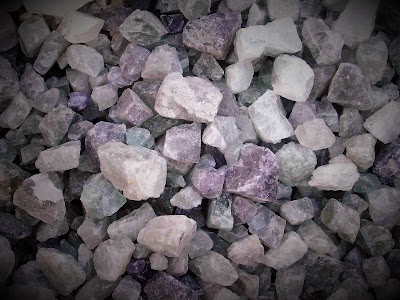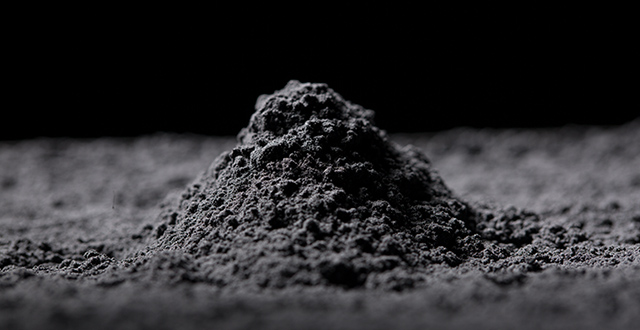EPDM Rubber Manufacturing Process
EPDM rubber is a type of synthetic rubber that has versatile utility in a variety of industries and applications. It is often referred to as EPR (ethylene propylene rubber), ethylene-propylene terpolymer or ethylene-propylene diene monomer. The chemical composition of EPDM rubber is comprised of long molecules called polymers interconnected by physical bonds which becomes the base material for this type of elastomer.
Read News:
https://www.chemanalyst.com/NewsAndDeals/NewsHome
One of the
key properties that make EPDM rubbers so unique is its excellent resistance to
extreme temperatures, providing an ideal material for use in automotive and
construction applications. The superior tensile strength and durability makes
it an optimal choice for harsh outdoor conditions like being exposed to rain,
sleet, snow, ultraviolet rays, ozone and salt water. It offers superior heat
resistance compared to other rubbers and can withstand temperatures ranging
from -40°C to 120°C. Ideal for outdoor use, it retains flexibility even at sub
zero temperatures.
Widely
used in automotive industry, it is employed in production parts such as axle
boots on wheeled vehicles, door seals and washers on car doors & windows,
fuel filter housings in engines etc., due to its superior qualities such as
durability & adaptability under harsh drivetrain conditions including
failure protection & resistant to wear & tear. Moreover its excellent
weather-proofing features helps in creating weathertight seals while also
accommodating movement between components due to temperature changes or
vibration.
Track Real
Time Chemical Prices: https://www.chemanalyst.com/Pricing-data/epdm-rubber-1110
In addition,
it’s also popularly used across building products manufacturing industries like
roofing membranes ,door & window seals ,garden hose insulation ,cable
insulation etc., where high quality finish coupled with good resistance against
weather conditions are required at the same time . Popular applications
includes sealing flat roofs, producing insulation materials for wall cladding
systems & waterproof linings for tanks among many others .These properties
adds great value making EPDM rubbers one of the most sought after product by
major building products manufacturers .
Overall,
EPDM rubbers offers a host of diverse advantages due its inherent properties
making it a widely used product amidst various industries with specific
application requirements such as automotive ,building products etc., fulfilling
their exact needs effectively with efficient cost benefits thereby making it an
essential part of modern industrial production today .
The
production process of EPDM rubber is a composite involving the integration of
advanced sciences. Specifically, SUV/van/light truck tires/seals, coolant hoses
and air conditioning systems (Automotive OEM Applications), roofing membrane
membranes, door and window seals, cable insulation and garden hose insulation
(Building products), wire and cable insulations manufacturing industries are
the primary consumers of this product.
The
manufacturing process of EPDM rubber involves three stages; Synthesis,
Extrusion or Molding, and Finalizing. During the synthesis stage, ethylene,
propylene and butadiene are combined to form the rubber base material. These
monomers are blended in tanks where they undergo a reaction resulting in long
molecular chains referred to as polymers. Thus formed polymer turns into an
amorphous liquid which can be further treated for solidifying through extrusion
or molding (Process Stage 2).
During the
Extrusion or Molding phase, the fluid rubber compound passes through an
extruder machine or cast into molds depending on its design purpose – usually
small cylindrical shapes such as O-rings or seals. For bigger components like
tires or hoses, molding techniques may be utilized when liquid rubber is poured
into tailored molds prior to hardening (Process Stage 2).
After all
successive stages are finished, EPDM products must pass concluding tests to
ensure their compliance with quality standards before delivery or usage. It
involves physical tests including tensile strength test and elongation;
chemical resistance exams; color fastness evaluations; dimensional stability evaluations;
visual inspections for imperfections etc., all playing their part significantly
towards how well an EPDM product operates under various circumstances.(Quality
Control).In addition to these three steps there are other relevant procedures
such cooling/curing , mixing additives ,compounding , dust removal etc .which
contribute substantially towards generating high quality output with consistent
characteristics .The useful life for an EPDM based component terminates upon
disposal post use in its intended application.
Top 5 manufacturers
of EPDM Rubber along with their production capacity are mentioned below.
|
Dow Chemicals |
390000 Tonnes |
|
Arlanxeo |
384000 Tonnes |
|
Kumho Petrochemicals |
240000 Tonnes |
|
Lion Elastomers |
200000 Tonnes |
|
ExxonMobil |
180000 Tonnes |
Lanxess is the only manufacturer worldwide that offers both solution and suspension (slurry) technology. The combination of two different processes enables Lanxess to produce a very wide range of EP rubber products from very high molecular weight and high ethylene grades produced in suspension to amorphous, moderate molecular weight grades. Both processes offer distinct advantages. Lion Copolymer (acquired Chemtura (acquired Uniroyal earlier) in 2007 for their elastomer business) and Versalis are also among the largest producers of EPDM and having their own developments in production and processing technologies. Kumho polychem had announced in May 2021 to take the full ownership of the synthetic rubber JV with JSR group in 2021.
About Us:
ChemAnalyst is a
subsidiary of Techsci Research, which was established in 2008, and has been
providing exceptional management consulting to its clients across the globe for
over a decade now. For the past four years, ChemAnalyst has been a prominent
provider of Chemical commodity prices in more than 15 countries. We are a team
of more than 100 Chemical Analysts who are committed to provide in-depth market
insights and real-time price movement for 300+ chemical and petrochemical
products. ChemAnalyst has reverberated as a preferred pricing supplier among
Procurement managers and Strategy professionals worldwide. On our platform, we
provide an algorithm-based subscription where users can track and compare years
of historical data and prices based on grades and incoterms (CIF, CFR, FOB,
& EX-Works) in just one go.
The
ChemAnalyst team also assists clients with Market Analysis for over 1200
chemicals including assessing demand & supply gaps, locating verified
suppliers, choosing whether to trade or manufacture, developing Procurement
Strategies, monitoring imports and exports of Chemicals, and much more. The
users will not only be able to analyze historical data for past years but will
also get to inspect detailed forecasts for the upcoming years. With access to
local field teams, the company provides high-quality, reliable market analysis
data for more than 40 countries.
ChemAnalyst
is your one-stop solution for all data-related needs. We at ChemAnalyst are
dedicated to accommodate all of our world-class clients with their data and
insights needs via our comprehensive online platform.
Contact Us:
Akanksha Sharma
B-44
Sector-57 Noida
National
Captial Region
India
- 201301
Mobile
No: +91 8882805349




Comments
Post a Comment